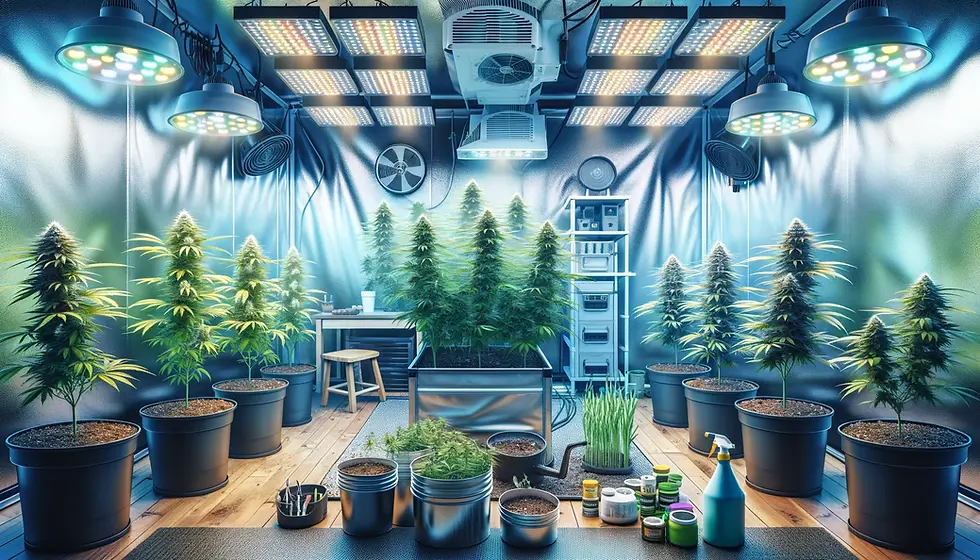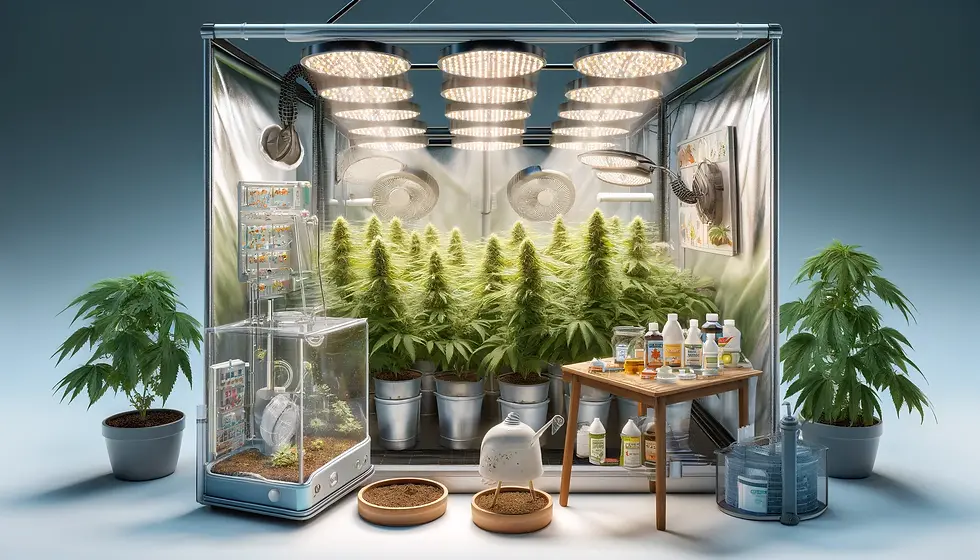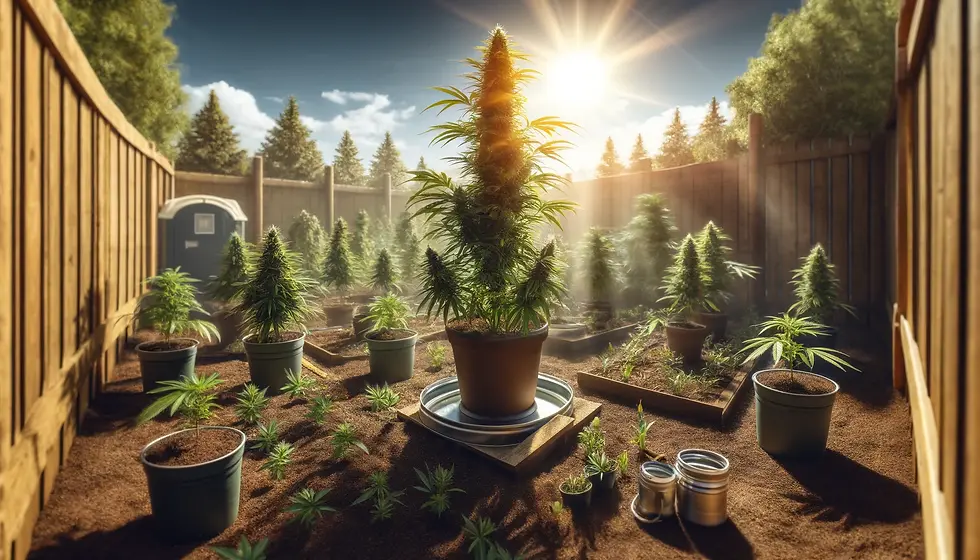
Growing your own cannabis at home can be a rewarding and cost-effective way to ensure you have access to high-quality, personalized strains. Whether you’re interested in cultivating cannabis for medical or recreational use, understanding the basics of cannabis cultivation is crucial for a successful harvest. This comprehensive guide will walk you through the essential steps and considerations for growing cannabis at home, from selecting the right seeds to harvesting and curing your plants.
Understanding Cannabis Basics
Types of Cannabis
Cannabis plants come in three main types: Cannabis sativa, Cannabis indica, and Cannabis ruderalis. Each type has distinct characteristics that affect their growth patterns, potency, and effects.
Cannabis sativa: Known for its tall, lanky structure and longer flowering period, sativa strains are typically uplifting and energetic.
Cannabis indica: Indica plants are shorter, bushier, and have a shorter flowering period. They are known for their relaxing and sedative effects.
Cannabis ruderalis: This type is less common and primarily used in breeding auto-flowering strains due to its ability to flower based on age rather than light cycles.
Photoperiod vs. Auto-flowering
Photoperiod strains: These require changes in light cycles to flower, mimicking the natural progression of seasons. They typically need 12 hours of light and 12 hours of darkness to start flowering.
Auto-flowering strains: These strains flower based on age rather than light cycles, making them easier for beginners. They typically flower within 8-10 weeks from germination.
Choosing the Right Seeds
Selecting the right seeds is crucial for a successful grow. Consider the following factors:
Strain type: Decide whether you want a sativa, indica, or hybrid strain based on your desired effects and growing conditions.
Genetics: Purchase seeds from reputable breeders to ensure high-quality genetics.
Growing conditions: Consider your growing environment (indoor or outdoor) and choose strains that thrive in those conditions.
Setting Up Your Grow Space

Indoor Growing
Indoor growing offers more control over environmental factors such as light, temperature, and humidity. Here’s what you’ll need:
Grow tent or space: A grow tent is ideal for controlling the environment. Ensure it has reflective walls to maximize light efficiency.
Lighting: LED, HID (high-intensity discharge), or fluorescent lights are commonly used. LEDs are energy-efficient and produce less heat.
Ventilation: Proper airflow is essential to prevent mold and pests. Use fans and exhaust systems to circulate air and control temperature.
Grow medium: Soil, coco coir, and hydroponics are popular options. Soil is the most beginner-friendly.
Nutrients: Cannabis plants require specific nutrients during different growth stages. Use fertilizers designed for cannabis.
Watering system: Ensure you have a consistent watering schedule. Overwatering and underwatering can harm your plants.

Outdoor Growing
Outdoor growing takes advantage of natural sunlight and is generally less expensive. Consider these factors:
Climate: Ensure your local climate is suitable for cannabis cultivation. Most strains prefer warm, sunny weather.
Location: Choose a discreet, secure location with ample sunlight (at least 6 hours of direct sunlight daily).
Soil preparation: Use nutrient-rich soil and amend it with compost or other organic matter.
Pest control: Monitor for pests and use natural pest control methods to protect your plants.
The Growing Cannabis Process
Germination
Germination is the process of sprouting seeds into seedlings. Here’s how to do it:
Soaking: Soak seeds in water for 12-24 hours to encourage germination.
Paper towel method: Place seeds between moist paper towels and keep them in a warm, dark place. Check daily and keep the paper towels moist.
Planting: Once seeds have sprouted (usually within 3-7 days), plant them in your grow medium about 1/2 inch deep.
Vegetative Stage
During the vegetative stage, plants focus on growing leaves and stems. This stage typically lasts 4-8 weeks.
Light cycle: Provide 18-24 hours of light per day.
Nutrients: Use a nutrient solution high in nitrogen.
Training: Techniques like topping, FIMing, and low-stress training (LST) can help manage plant height and improve yields.

Flowering Stage
The Cannabis flowering stage is when plants produce buds. This stage lasts 6-12 weeks, depending on the strain.
Light cycle: Switch to a 12/12 light cycle (12 hours of light, 12 hours of darkness) for photoperiod strains.
Nutrients: Use a nutrient solution high in phosphorus and potassium.
Monitoring: Watch for signs of nutrient deficiencies, pests, and diseases.
Harvesting
Knowing when to harvest is crucial for maximizing potency and flavor.
Trichome inspection: Use a magnifying glass or microscope to examine trichomes on the buds. Harvest when trichomes are milky white with some amber.
Flushing: Stop feeding nutrients 1-2 weeks before harvest and water with plain water to flush out excess nutrients.
Cutting: Cut plants at the base and trim away large fan leaves.
Drying and Curing
Proper drying and curing are essential for preserving flavor and potency.
Drying: Hang trimmed plants or branches upside down in a dark, well-ventilated area with temperatures between 60-70°F and humidity around 50%. Drying typically takes 7-14 days.
Curing: Place dried buds in glass jars and store in a cool, dark place. Open jars daily for the first week to release moisture and then less frequently. Cure for at least 2-4 weeks for best results.
Common Issues and Troubleshooting
Nutrient Deficiencies
Nitrogen deficiency: Yellowing leaves, starting from the bottom. Address with a nitrogen-rich nutrient solution.
Phosphorus deficiency: Purple or dark spots on leaves. Use a phosphorus-rich fertilizer.
Potassium deficiency: Yellowing leaf edges and tips. Provide a potassium-rich nutrient solution.
Pests and Diseases
Spider mites: Small, web-spinning pests. Treat with insecticidal soap or neem oil.
Powdery mildew: White, powdery fungus on leaves. Increase airflow and treat with a fungicide.
Root rot: Brown, mushy roots caused by overwatering. Improve drainage and reduce watering frequency.
Environmental Issues
Temperature stress: Cannabis prefers temperatures between 70-85°F during the day and slightly cooler at night. Use fans and air conditioning to regulate temperature.
Humidity: Maintain humidity levels between 40-60%. Use a dehumidifier or humidifier as needed.
Legal Considerations
Before growing cannabis at home, research your local laws and regulations. Some regions allow home cultivation for medical or recreational use, while others have strict prohibitions. Ensure you comply with any licensing, plant count limits, and security requirements.
Conclusion
Growing cannabis at home can be a fulfilling and enjoyable hobby that provides you with high-quality, personalized strains. By understanding the basics of cannabis cultivation, selecting the right seeds, setting up your grow space, and following best practices throughout the growing process, you can achieve a successful harvest. Remember to monitor your plants closely, address any issues promptly, and stay informed about legal considerations in your area. Happy growing!

Comments